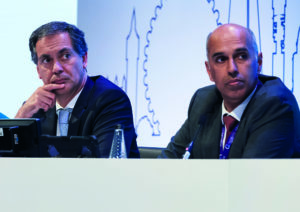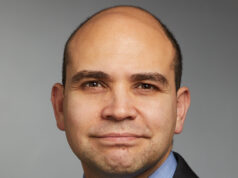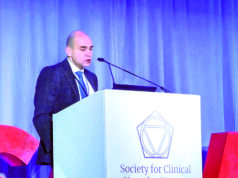
To combat the “overtreatment problem” in the appropriate care of venous disease, “a concerted, complex, multimodal effort” is required from specialists across disparate parts of the world.
That was the conclusion delivered by Manjit Gohel (Cambridge University Hospitals, Cambridge, UK) during the opening day Venous & Lymphatic Challenges session—Appropriate Care Challenges—at the 2022 Charing Cross (CX) International Symposium (26–28 April, London, UK). He further told attendees: “But the elephant in the room is reimbursement. Until that is sorted,” he said, “we will not be able to get on top of this.”
During his presentation, “How to curtail inappropriate care in venous disease interventions,” Gohel had stressed how the aim was to curb overtreatment but also not reduce innovation.
“Probably the most inappropriate care in venous disease is actually undertreatment. We have masses of undiagnosed, and definitely undertreated, venous problems. Overtreatment is however an enormous problem.”
Why? Education plays a part, he said, along with such elements as patients’ desire for intervention and an evidence gap in some areas of care that “allows variations in practice.” Yet, the biggest is financial gain, Gohel outlined. “Reimbursement systems around the world are poorly incentivised,” he said.
Earlier in the session, Steve Elias (Center for Vein Disease, Englewood, USA) spoke on the extent of overtreatment in superficial venous disease care, stating how evidence demonstrated such overtreatment clearly represented inappropriate care—“people treating the wrong patients, or doing too many things on who we consider the right patients.”
Responding to a question posed by Armando Mansilha (University of Porto, Porto, Portugal), a session moderator, about how aspects of the overtreatment problem might be addressed, Elias offered one potential solution: “Stop paying people for doing the wrong thing by partnering with payors,” he said. Elias had referenced outliers in practice who may perform many more ablations per patient than the 1.8 shown in a Medicare data analysis from 2019. “Because the payors know what claims are being sent in. Let us start with those who were two standard deviations away from the norm,” Elias added. These interventionists may be doing the right thing, or perhaps they are seeing patients with more advanced disease, but such a move to partner with payors would represent a move in the right direction, he explained.
Kathleen Gibson (Lake Washington Vascular, Bellevue, USA), turned the spotlight on deep venous disease, speaking on “managing the safe introduction of medical devices,” focused particularly on the developing area of dedicated venous stents.
“When these were approved, it was kind of like taking people who were used to driving a stick shift [car],” Gibson said, making an analogy to heretofore use of the nondedicated Wallstent. “Now we have got a fleet of automatics.” Everyone could now drive easier, she said, except the dawn of dedicated venous stents “led to some disasters.”
“Maybe we should curb our enthusiasm,” Gibson suggested.
She pondered what venous disease specialists can do differently. “We need to make sure we have the right doctors doing the procedure with appropriate skills, judgement and ethics,” Gibson said. That means “correct patient selection in terms of diagnosis and application of technology, and short- and long-term follow-up,” along with increased rigor of venous training, discouraging inappropriate use, and publishing complications.
The value of recently published European Society for Vascular Surgery (ESVS) guidelines on chronic venous disease in the promotion of evidence-based care was highlighted by Marianne De Maeseneer (Erasmus Medical Centre, Rotterdam, The Netherlands), who is chair of the ESVS guideline-writing committee.
“The new ESVS guidelines certainly help to promote evidence-base care for our patients with chronic venous disease,” she said. “A vast majority are class 1 and 2a recommendations, so they are clear guidance for the clinician. The level of evidence should still be improved in future research,” and gaps in the evidence should be filled by randomised controlled trials and real-world registries, De Maeseneer added.
Gibson, meanwhile, offered perspective from the United States during the questions and answers following Gohel’s presentation on ways to curtail overtreatment.
Venous disease is not well taught in fellowship or training Stateside, she said. Trainees receive lots of arterial training during the training years, yet a large portion of what they confront in practice is venous disease—and they are “not trained”, she said.
Regulation, too, figures as an issue, Gibson added. While “hospitals can regulate who can put things in,” she said, “a lot of devices like iliac stents are put in in the office setting”, where there is no regulation, and where a dermatologist armed only with their state medical license can be performing venous procedures.
Gohel was succinct as he added one further concluding statement. “If you have the right healthcare culture, humility, focus on patients, desire to audit and be transparent with your results, and amend your practice based on your results, that is the right approach,” he said.









